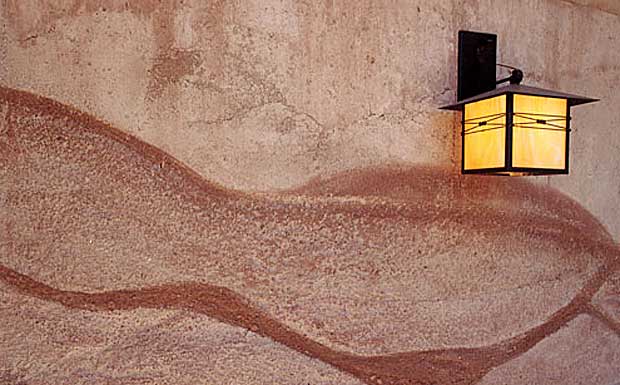Cast Earth Homes
Cast earth homes are becoming more popular, as eco-friendly homeowners
have designs drawn up for these green houses. The materials used
give just enough time for the earth to be worked into forms, and
the building process has been refined in recent years.
|
|
 Cast Earth Home
Cast Earth Home |
Cast earth is a unique material with interesting properties.
It's as strong as rammed earth or adobe, and has the strength
to support the majority of building loads. It is more durable
and stronger than other materials, since its tensile strength
is greater.
When homes are made from cast earth, the material expands a bit
as it cures, and this makes it less likely to develop cracks.
It does absorb some moisture, but keeps its strength and structural
integrity even if it becomes saturated. You can also include additives
in the original mix that will make the cast earth more resistant
to moisture.
Casting Call ...
You may create cast earth from many soil types. It doesn't require
the binding capacity that clay provides. If there is some clay
in the mixture, that is fine, but it doesn't need it. The finished
look is aesthetically pleasing, too. It looks like slabs of cut
sandstone, with striations and patterns that make it a unique
mixture to build with.
Take into account long term costs for energy when you build a
cast earth home. This will lower the cost of owning a home, and
you don't need a lot of money up-front. You can use mass walls,
such as earth walls, as an energy efficient way to build a home,
and some designs can create a home that is even more efficient.
Since cast earth is a new type of construction, you can incorporate
efficient design ideas that will give you the best energy rates
when the home is done. In many temperate climates, the earth walls
themselves give you their own low energy design. If you are building
in a climate where you need insulation, this can be incorporated
into the wall when you pour it.

In some other earth buildings, insulation is not as easy to incorporate
into the walls. It doesn't work with rammed earth, unless you
apply an external layer after your walls are done. This creates
an un-natural exterior, which defeats part of the purpose of the
home. When using cast earth, you just insert your insulation into
the forms for the walls, and then pour the cast earth on either
side of the insulation, as you fill the forms.
Your walls won't be solar collectors if you use an inserted thermal
barrier, but they will preserve their properties as a heat sink
for the interior. If you plan to stucco your exterior walls, the
insulation is placed on the surface, rather than inside the walls.
But if you will want an unfinished exterior, the internal insulation
can be used, and it doesn't add much expense to the home.
Tranfer Your Energy ...
During the cooler season where you live, the mass walls will
be able to transfer the energy of the sun into the house, as long
as you have not used exterior insulation. Allowing the sun's heat
inside will reduce your need for other heat sources. Cast earth
homes are environmentally friendly and also comfortable and safe
to live in.
|

